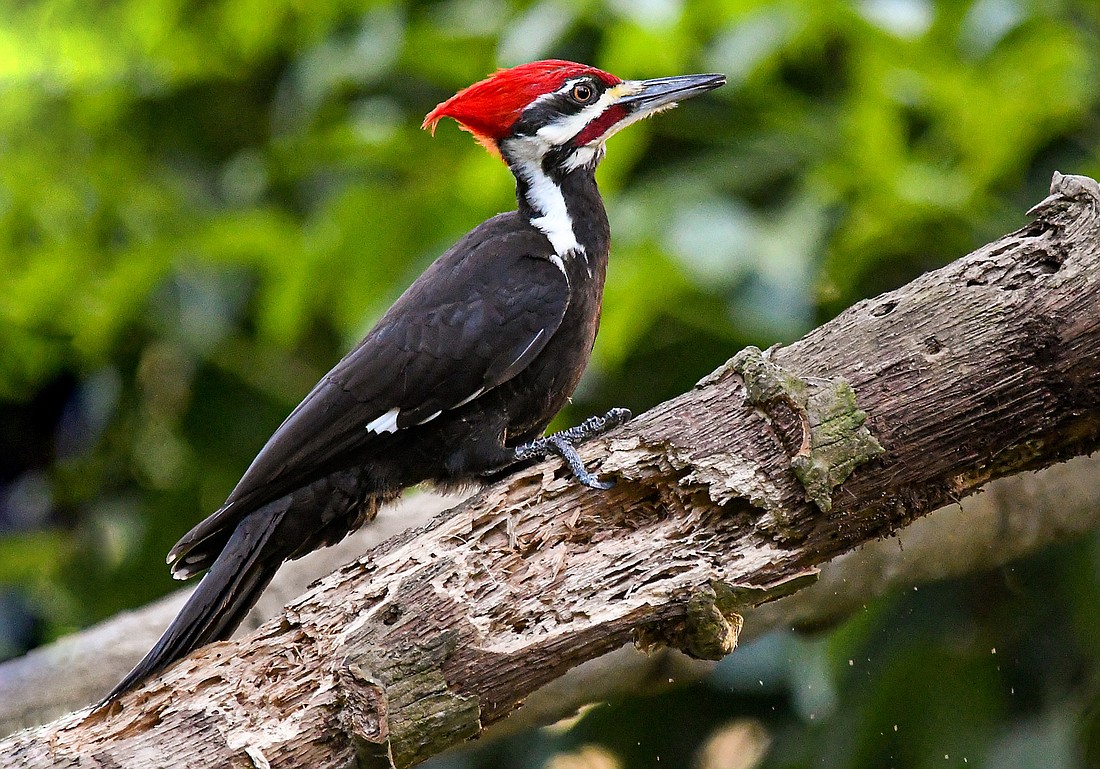:focal(2248x1499:2249x1500)/https://tf-cmsv2-smithsonianmag-media.s3.amazonaws.com/filer_public/81/04/8104e377-6b9f-4be2-999a-6279cb962be0/gettyimages-1362781594.jpg)
A woodpecker prepares to smash its beak against a tree. Carol Gaudreault / 500px via Getty Images
About 12 thousand times a day, woodpeckers drill their beaks into trees to search for food, make nests or communicate with other birds.
“This is basically what the woodpeckers need to do to survive, so if they’re not sleeping and they’re not resting, they are probably pecking on something,” Wesley Hochachka, an ecologist at the Cornell Lab of Ornithology, tells Popular Science’s Kate Baggaley. “There’s no respite from it at all.”
In the scientific community, researchers have widely accepted that the birds have some sort of shock-absorbing mechanism in their heads that allows them to repeatedly smash their beaks against trees without getting a concussion.
“Blogs and information panels at zoos all present this as fact,” Sam Van Wassenbergh, a biologist at the University of Antwerp, tells the New York Times’ Sam Jones. The birds have even inspired shock-absorbing helmet designs for athletes.
But this didn’t make sense to Van Wassenbergh. A built-in shock absorption mechanism would hamper the birds’ pecking ability, and they’d need to exert more energy to reach their meals.

“It had to be tested,” he tells Scientific American’s Viviane Callier.
In a paper published in Current Biology, researchers used high-speed cameras to film three species of woodpeckers hammering into a tree: the black woodpecker, the pileated woodpecker and the great spotted woodpecker. They tracked motion on different points of the birds’ heads to see how they moved in relation to each other. Because a woodpecker’s brain and eye are jammed closely together with little room for movement, researchers tracked the eye to analyze how the birds’ brain moved, per the Atlantic’s Ed Yong.
If the birds’ skulls absorbed shock, the brain would decelerate slower than the beak. But the team found no difference in movement patterns between the beak and brain—suggesting that the head acted as a stiff hammer rather than a shock absorber. Van Wassenbergh, who’s the lead author on the new paper, says this is logical.
“People don’t use hammers that have a shock absorber built into it; it just makes hammering quite inefficient,” he tells Popular Science.
So how do woodpeckers repeatedly drum their beaks against trees without getting concussions?
It has to do with their size, per Van Wassenbergh.
“We forget that woodpeckers are considerably smaller than humans,” he tells the Times. “Smaller animals can withstand higher decelerations. Think about a fly that hits a window and then just flies back again.” A woodpecker’s brain is about 700 times smaller than a human’s, per NPR’s Jon Hamilton.
The researchers created a model to calculate pressure in the woodpeckers’ skulls. They found that the birds would need to hit wood twice as fast to concuss themselves.
“That really lays to rest the idea that some part of the head is acting as a shock absorber,” Margaret Rubega, an ornithologist at the University of Connecticut who wasn’t involved in the study, tells The Atlantic.
Maja Mielke, a biologist at the University of Antwerp and a co-author of the study, tells the Times that this research shows how scientists may need to re-examine commonly held beliefs.
“It’s always worth looking at phenomena that we believe we are already understanding, because sometimes, there can be surprises,” she tells the newspaper. “Intuition can fool us.”

source: https://www.smithsonianmag.com/








